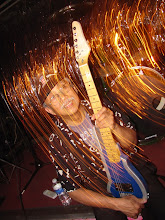Sunday, January 01, 2006
Monday, December 19, 2005
Brief History of the First Filipinos to Arrive in Hawaii
“Centennial Poem”
As we stood on the shores of Wakiki
The truth that occurred to Julian and me
Was the wish that “Aloha” spirit stay
To share views with you as you gaze today
On the memories captured through a lens
Where the wave of immigration begins
In Hawaii, Filipinos landed
Changing America single handed
To share love, work hard and put family first
To gaze on others and dismiss their worst
To contribute to healing working as one
To gaze with great pride on all that’s been done
100 years of Filipino pride
Accomplishments celebrated in stride
For all Filipinos who paved the way
America celebrates every day
Of freedom to create, express and thrive
To teach our children, instilling the drive
To succeed and share with others at hand
Thank you the Philippines, the Motherland.
Tutubi Productions
Linda Pirrone
Sunrise - New Opportunities to Share Filipino Culture in Hawaii
Filipinos in Hawaii celebrate centennial First By Belinda A. Aquino, Inquirer
BIG ISLAND, Hawaii-One hundred years ago, at Honolulu Harbor, the 20th of December would have been just another day of ships coming and going. But at 3 o'clock that afternoon, a small crowd had gathered to witness the arrival of 15 Filipinos on board S/S Doric. Honolulu residents had seen other Asians before--Chinese, Japanese and Koreans--but not Filipinos. Amid the stares of curious onlookers, the 15 "Sacadas" (migrant farm workers) got off the boat and were transported the next day to the Olaa Plantation here on the Big Island, which is also called Hawaii. The ceremonies organized by the Filipino Centennial Celebration Commission mark the beginning of a year-long observance of the 100th anniversary of the arrival of the 15 Filipinos. One of the pioneers, Marciano Bello, reportedly from Candon, Ilocos Sur, stayed on the Big Island after his contract expired and raised a family. One of his descendants is Lorraine Rodero Inouye, the first woman of Filipino ancestry to become mayor of the Big Island who is currently a member of the state Senate. Actually, the 15 were not the first Filipinos to set foot on Hawaii . A few "Manila men" were reported to have worked in Hawaii during the time of the monarchy in the 19th century as cooks and musicians. Two were said to have petitioned to become citizens of the Kingdom of Hawaii. And at least six were known to be involved with the Royal Hawaiian Band, with one surnamed "Libornio" playing an important role. But 1906 marked the beginning of an aggressive campaign to recruit young Filipino workers by the Hawaiian Sugar Planters' Association (HSPA) to work on the plantations. Sugar was king in those days, and newly opened plantations were in desperate need of laborers. By the 1930s, the Sacadas had become the majority of the plantation workforce, replacing the Japanese. This caused some tension between the two competing ethnic groups. The Japanese, who came in the late 19th century, had been the dominant workforce until the Filipinos came. The US annexation of two foreign territories--Hawaii and the Philippines--had a profound impact on the burgeoning sugar industry. Hawaii's annexation opened up additional acreage for sugar cultivation and producers were given privileges similar to those on the US continent. However, annexation also made American federal laws applicable to Hawaii, now a US territory. Two such laws, the Chinese Exclusion Act and the Foran Act of 1885, hurt the labor supply as hordes of Chinese, Japanese and Portuguese workers left the plantations. The planters' dilemma therefore was to find new sources of labor. The HSPA recruited "trial" workers from Puerto Rico, Korea, Russia, Spain and even India.
The American annexation of the Philippines on Dec. 10, 1898, making it a US colony, was a godsend to the sugar planters. This meant that as American subjects, Filipinos could be recruited without any immigration restrictions. A US Senate report in 1903 mentioned the vigorous demands of the planters for the creation of a government bureau of immigration for the purpose of "superintending the importation of foreign laborers and the introduction of immigrants." A new era which would dramatically alter the ethnic demographic future of Hawaii had begun. As an American colony with a huge rural population, the Philippines immediately became the primary source of cheap labor for the plantations. Before 1920, the largest group of Sacada recruits came from the Visayas, where sugar was already a thriving industry. After 1920, HSPA recruitment was largely confined to the Ilocos where life was hard, the population dense and the land not productive for agricultural purposes. Ilocanos were the prime candidates for plantation labor because of their reputed traits of industry, frugality, hard work and simplicity. There were a few Tagalogs, like Pablo Manlapit who came from Lipa, Batangas. He rose to become the Filipinos' most militant labor leader, leading strikes on the plantations for higher wages and better working conditions for his fellow Sacadas. The lives of the early Sacadas were fraught with fear and insecurity. Ruben Alcantara, author of the first dissertation on the Sacadas, described their plight as consisting of 12 hours work on the sugar mill or 10 hours in the cane fields, interrupted only by a 30-minute lunch and occasional pause for water. "Long separation from their families, a scarcity of feminine companionship, feelings of discrimination and low status on the plantation labor hierarchy combined to place a heavy burden on the shoulders of these pioneer workers," Alcantara wrote. Between 1906 and 1930, the HSPA had brought in nearly 120,000 Filipinos to Hawaii, and in 1946, the last batch of Sacadas, consisting of 6,000 Ilocanos, arrived in Hawaii. After independence, the quota was limited to 50 a year (later increased to 100). The Tydings-McDuffie Law had defined Filipinos as "aliens" subject to immigration restrictions. Little did the original 15 know that today the Filipino community they started a century ago would grow to 270,000, comprising nearly 23 percent of Hawaii's population, the highest percentage-wise in America. Current immigration from the Philippines averages 4,000 a year. That factor plus the usually higher Filipino birth rates in the state will accelerate the Filipino community's growth, making it very much a part of Hawaii's future.
Belinda A. Aquino is a University of Hawaii professor and director of Philippine Studies. She is also a member of the Filipino Centennial Celebration Commission.
As we stood on the shores of Wakiki
The truth that occurred to Julian and me
Was the wish that “Aloha” spirit stay
To share views with you as you gaze today
On the memories captured through a lens
Where the wave of immigration begins
In Hawaii, Filipinos landed
Changing America single handed
To share love, work hard and put family first
To gaze on others and dismiss their worst
To contribute to healing working as one
To gaze with great pride on all that’s been done
100 years of Filipino pride
Accomplishments celebrated in stride
For all Filipinos who paved the way
America celebrates every day
Of freedom to create, express and thrive
To teach our children, instilling the drive
To succeed and share with others at hand
Thank you the Philippines, the Motherland.
Tutubi Productions
Linda Pirrone
Sunrise - New Opportunities to Share Filipino Culture in Hawaii

Filipinos in Hawaii celebrate centennial First By Belinda A. Aquino, Inquirer
BIG ISLAND, Hawaii-One hundred years ago, at Honolulu Harbor, the 20th of December would have been just another day of ships coming and going. But at 3 o'clock that afternoon, a small crowd had gathered to witness the arrival of 15 Filipinos on board S/S Doric. Honolulu residents had seen other Asians before--Chinese, Japanese and Koreans--but not Filipinos. Amid the stares of curious onlookers, the 15 "Sacadas" (migrant farm workers) got off the boat and were transported the next day to the Olaa Plantation here on the Big Island, which is also called Hawaii. The ceremonies organized by the Filipino Centennial Celebration Commission mark the beginning of a year-long observance of the 100th anniversary of the arrival of the 15 Filipinos. One of the pioneers, Marciano Bello, reportedly from Candon, Ilocos Sur, stayed on the Big Island after his contract expired and raised a family. One of his descendants is Lorraine Rodero Inouye, the first woman of Filipino ancestry to become mayor of the Big Island who is currently a member of the state Senate. Actually, the 15 were not the first Filipinos to set foot on Hawaii . A few "Manila men" were reported to have worked in Hawaii during the time of the monarchy in the 19th century as cooks and musicians. Two were said to have petitioned to become citizens of the Kingdom of Hawaii. And at least six were known to be involved with the Royal Hawaiian Band, with one surnamed "Libornio" playing an important role. But 1906 marked the beginning of an aggressive campaign to recruit young Filipino workers by the Hawaiian Sugar Planters' Association (HSPA) to work on the plantations. Sugar was king in those days, and newly opened plantations were in desperate need of laborers. By the 1930s, the Sacadas had become the majority of the plantation workforce, replacing the Japanese. This caused some tension between the two competing ethnic groups. The Japanese, who came in the late 19th century, had been the dominant workforce until the Filipinos came. The US annexation of two foreign territories--Hawaii and the Philippines--had a profound impact on the burgeoning sugar industry. Hawaii's annexation opened up additional acreage for sugar cultivation and producers were given privileges similar to those on the US continent. However, annexation also made American federal laws applicable to Hawaii, now a US territory. Two such laws, the Chinese Exclusion Act and the Foran Act of 1885, hurt the labor supply as hordes of Chinese, Japanese and Portuguese workers left the plantations. The planters' dilemma therefore was to find new sources of labor. The HSPA recruited "trial" workers from Puerto Rico, Korea, Russia, Spain and even India.
The American annexation of the Philippines on Dec. 10, 1898, making it a US colony, was a godsend to the sugar planters. This meant that as American subjects, Filipinos could be recruited without any immigration restrictions. A US Senate report in 1903 mentioned the vigorous demands of the planters for the creation of a government bureau of immigration for the purpose of "superintending the importation of foreign laborers and the introduction of immigrants." A new era which would dramatically alter the ethnic demographic future of Hawaii had begun. As an American colony with a huge rural population, the Philippines immediately became the primary source of cheap labor for the plantations. Before 1920, the largest group of Sacada recruits came from the Visayas, where sugar was already a thriving industry. After 1920, HSPA recruitment was largely confined to the Ilocos where life was hard, the population dense and the land not productive for agricultural purposes. Ilocanos were the prime candidates for plantation labor because of their reputed traits of industry, frugality, hard work and simplicity. There were a few Tagalogs, like Pablo Manlapit who came from Lipa, Batangas. He rose to become the Filipinos' most militant labor leader, leading strikes on the plantations for higher wages and better working conditions for his fellow Sacadas. The lives of the early Sacadas were fraught with fear and insecurity. Ruben Alcantara, author of the first dissertation on the Sacadas, described their plight as consisting of 12 hours work on the sugar mill or 10 hours in the cane fields, interrupted only by a 30-minute lunch and occasional pause for water. "Long separation from their families, a scarcity of feminine companionship, feelings of discrimination and low status on the plantation labor hierarchy combined to place a heavy burden on the shoulders of these pioneer workers," Alcantara wrote. Between 1906 and 1930, the HSPA had brought in nearly 120,000 Filipinos to Hawaii, and in 1946, the last batch of Sacadas, consisting of 6,000 Ilocanos, arrived in Hawaii. After independence, the quota was limited to 50 a year (later increased to 100). The Tydings-McDuffie Law had defined Filipinos as "aliens" subject to immigration restrictions. Little did the original 15 know that today the Filipino community they started a century ago would grow to 270,000, comprising nearly 23 percent of Hawaii's population, the highest percentage-wise in America. Current immigration from the Philippines averages 4,000 a year. That factor plus the usually higher Filipino birth rates in the state will accelerate the Filipino community's growth, making it very much a part of Hawaii's future.
Belinda A. Aquino is a University of Hawaii professor and director of Philippine Studies. She is also a member of the Filipino Centennial Celebration Commission.
Saturday, December 17, 2005
Who is Julian and what did he do in 2005?
The Philippine-American art scene in 2005 became much more global and much less local. In February, Washington, DC Philippine born artist, Julian Oteyza launched a new art show concept in New York at the Philippine Center. The show was aptly named “Art Palabok” and was billed as “a creative feast for the eyes and soul with ingredients from talented artists with diverse styles of expression.” The recipe for an “Art Palabok” show was “A group of talented artists, a pound of creativity, one cup of “kababayan spirit, diced gratitude, dash of appreciation, half cup of promotion skills, one cup of quality control, and 2 ounces of sensitivity.” Oteyza’s concept was that Palabok artists would help others and inspire other artists to exhibit their creations by inviting them to meet the friendly and interesting Palabok artists; expose artists to the neglected art of promoting through networking and exchanging ideas and venues; instill the “kababayan” spirit by helping other artists who might not be present at show hangings to ensure their works are presented and hung properly and promote each others works during exhibit openings.
In March, George Mason University in Arlington, Virginia was the temporary home of “Memory Surfaces” a traveling art exhibit featuring 9 Philippine-American artists, including Julian’s father, Victor Oteyza, one of the “Thirteen Moderns”, the Neo-Realists that included giants in Philippine Art (Estela, Legaspi, Luz, Magsaysay-Ho, Ocampo, Tabuena, Zobel). A simultaneous show was exhibited at George Washington University during the Philippine Cultural Society’s annual spring cultural heritage celebration.
These shows might have been enough for any artist to rest on his laurels for the balance of 2005 but Julian was compelled to create “Brown Strokes on a White Canvas: Honoring Our Past; Living in the Present; and Preparing for the Future” a themed show at Martin Luther King, Jr. library in Washington, DC that invited participating artists to celebrate Philippine Independence and Asian Pacific Heritage month by exhibiting work in celebration of the freedom to express artistically. This show featured over 30 artists with an opening reception that expanded the definition of artistic expression by performance art including keynote speaker, Dr. Franklin Odo, the Smithsonian Institution; poetry by George Washington University graduating senior, Joni Samilin; a demonstration of Arnis by Roman Picardo; Operagraphy by Satomi China Pirrone; a martial arts demonstration by Alex Valera; and original songs by Rodney and Jitter Garcia. The month ended with an all day celebration of art, music, friendship and fun that welcomed visitors from Japan, New York, Maryland, Virginia, California and other parts of the globe to create an artistic community for one day in nearby Woodbridge, Virginia.
June is the month designated for many Philippine Independence celebrations and the Children’s Art Contest was once again organized in support of the theme of this year’s festival, “Bayanihan, Building Strong Communities”. Children from 3 years old to 16 interpreted the theme and created beautiful works of art on the spot during the annual Philippine festival sponsored and organized by the Philippine-American Foundation for Charities, Inc.
The month of July was filled with an exhibit of the International Artists Support Group where Julian as a member of the board of directors invited Marielle Mariano, Marvin Santos Rita Cacas and to exhibit their work at Vision’s Gallery in Washington, DC that featured a performance by Satomi China Pirrone for the opening reception. Vision’s Gallery invited several of the artists back for the balance of the month and Oteyza gathered many other artists from many different countries to an exceptional reception featuring the music of Philippine-American band, First Rays; the song stylings of Angie Pepa; a performance by Satomi China Pirrone and music by Rodney Garcia and friends.
August was a time for Tutubi Productions to welcome independent filmmaker, Kidlat Tahamik to Washington, DC for a film night at American Legion Post 139 in Arlington, Virginia. The screening of one Tahamik’s works-in-progress was enhanced by an art exhibit surrounding the meeting space and a lively question and answer session with many queries about the creative process. August also found Oteyza and friends at Barnes and Nobel bookstore in Falls Church, Virginia where photography and art were displayed to an appreciative audience.
In September and October, The Art League of Reston invited Brown Strokes on a White Canvas to bring the traveling exhibit to The University of Phoenix in Reston, Virginia. This exhibit again featured many Philippine-American Artists but extended the outreach to include other artists whose work celebrated the freedom to express creatively. The broad spectrum of artistic expression covered ages ranging from 3 years old to 97 years old. The bright colors and interesting shapes in the subject matter grew press coverage around the world. Thank heaven for E mail!
October brought a new concept to the Philippine Embassy when Oteyza and Pirrone (Tutubi Productions) launched a new concept in children’s entertainment. The first “Children’s Heritage Day” was held as an inter-active workshop in the beautiful Philippine Embassy main hall where the winners of the 2005 Children’s art contest were recognized for their creative excellence with their very own art exhibit and story tellers assembled to share stories of the Philippines with the children who were then given the task of interpreting the stories through art.
November found Julian busily building “blogs” for all of the wonderful events from the very inception of “Brown Strokes on a White Canvas” in 2002 through all of the exciting events that have occurred since. http://tutubiproductions.blogspot.com/, http://brownstrokes.blogspot.com/, http://julianoteyzaart.blogspot.com/
In December, the shores of Hawaii found Julian with his sketch pad and camera preparing story boards for his next adventure in celebration of Philippine Independence. The year 2006 will be momentous as art exhibits are planned as a moveable feast for the eyes. Stay tuned – it’s really going to be something special!
Contact Julian Oteyza at:
6312 Seven Corners Center, Falls Church, VA 22044
Telephone: (703) 969-5469 . Email: joteyza@verizon.net . Website: www.guitaround.com
Google julian oteyza to learn more about him
In March, George Mason University in Arlington, Virginia was the temporary home of “Memory Surfaces” a traveling art exhibit featuring 9 Philippine-American artists, including Julian’s father, Victor Oteyza, one of the “Thirteen Moderns”, the Neo-Realists that included giants in Philippine Art (Estela, Legaspi, Luz, Magsaysay-Ho, Ocampo, Tabuena, Zobel). A simultaneous show was exhibited at George Washington University during the Philippine Cultural Society’s annual spring cultural heritage celebration.
These shows might have been enough for any artist to rest on his laurels for the balance of 2005 but Julian was compelled to create “Brown Strokes on a White Canvas: Honoring Our Past; Living in the Present; and Preparing for the Future” a themed show at Martin Luther King, Jr. library in Washington, DC that invited participating artists to celebrate Philippine Independence and Asian Pacific Heritage month by exhibiting work in celebration of the freedom to express artistically. This show featured over 30 artists with an opening reception that expanded the definition of artistic expression by performance art including keynote speaker, Dr. Franklin Odo, the Smithsonian Institution; poetry by George Washington University graduating senior, Joni Samilin; a demonstration of Arnis by Roman Picardo; Operagraphy by Satomi China Pirrone; a martial arts demonstration by Alex Valera; and original songs by Rodney and Jitter Garcia. The month ended with an all day celebration of art, music, friendship and fun that welcomed visitors from Japan, New York, Maryland, Virginia, California and other parts of the globe to create an artistic community for one day in nearby Woodbridge, Virginia.
June is the month designated for many Philippine Independence celebrations and the Children’s Art Contest was once again organized in support of the theme of this year’s festival, “Bayanihan, Building Strong Communities”. Children from 3 years old to 16 interpreted the theme and created beautiful works of art on the spot during the annual Philippine festival sponsored and organized by the Philippine-American Foundation for Charities, Inc.
The month of July was filled with an exhibit of the International Artists Support Group where Julian as a member of the board of directors invited Marielle Mariano, Marvin Santos Rita Cacas and to exhibit their work at Vision’s Gallery in Washington, DC that featured a performance by Satomi China Pirrone for the opening reception. Vision’s Gallery invited several of the artists back for the balance of the month and Oteyza gathered many other artists from many different countries to an exceptional reception featuring the music of Philippine-American band, First Rays; the song stylings of Angie Pepa; a performance by Satomi China Pirrone and music by Rodney Garcia and friends.
August was a time for Tutubi Productions to welcome independent filmmaker, Kidlat Tahamik to Washington, DC for a film night at American Legion Post 139 in Arlington, Virginia. The screening of one Tahamik’s works-in-progress was enhanced by an art exhibit surrounding the meeting space and a lively question and answer session with many queries about the creative process. August also found Oteyza and friends at Barnes and Nobel bookstore in Falls Church, Virginia where photography and art were displayed to an appreciative audience.
In September and October, The Art League of Reston invited Brown Strokes on a White Canvas to bring the traveling exhibit to The University of Phoenix in Reston, Virginia. This exhibit again featured many Philippine-American Artists but extended the outreach to include other artists whose work celebrated the freedom to express creatively. The broad spectrum of artistic expression covered ages ranging from 3 years old to 97 years old. The bright colors and interesting shapes in the subject matter grew press coverage around the world. Thank heaven for E mail!
October brought a new concept to the Philippine Embassy when Oteyza and Pirrone (Tutubi Productions) launched a new concept in children’s entertainment. The first “Children’s Heritage Day” was held as an inter-active workshop in the beautiful Philippine Embassy main hall where the winners of the 2005 Children’s art contest were recognized for their creative excellence with their very own art exhibit and story tellers assembled to share stories of the Philippines with the children who were then given the task of interpreting the stories through art.
November found Julian busily building “blogs” for all of the wonderful events from the very inception of “Brown Strokes on a White Canvas” in 2002 through all of the exciting events that have occurred since. http://tutubiproductions.blogspot.com/, http://brownstrokes.blogspot.com/, http://julianoteyzaart.blogspot.com/
In December, the shores of Hawaii found Julian with his sketch pad and camera preparing story boards for his next adventure in celebration of Philippine Independence. The year 2006 will be momentous as art exhibits are planned as a moveable feast for the eyes. Stay tuned – it’s really going to be something special!
Contact Julian Oteyza at:
6312 Seven Corners Center, Falls Church, VA 22044
Telephone: (703) 969-5469 . Email: joteyza@verizon.net . Website: www.guitaround.com
Google julian oteyza to learn more about him
Hawaii Series 2
Heavenly Reflections in a Single Drop of Water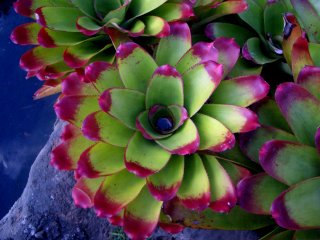
 Safely Ensconsed in a Temporary Home (trash dumpster)
Safely Ensconsed in a Temporary Home (trash dumpster)
 Aloha Seance (bottom of a drinking glass)
Aloha Seance (bottom of a drinking glass)
 Avian Art Therapy
Avian Art Therapy
(bird poop)
 Coconut Husk Whispers "Welcome"
Coconut Husk Whispers "Welcome"

Gathering Nourishment for the Journey Across America
 Bird Tsismis (Gossip)
Bird Tsismis (Gossip)
 Fading Beauty (decaying flower)
Fading Beauty (decaying flower)

 Safely Ensconsed in a Temporary Home (trash dumpster)
Safely Ensconsed in a Temporary Home (trash dumpster) Aloha Seance (bottom of a drinking glass)
Aloha Seance (bottom of a drinking glass) Avian Art Therapy
Avian Art Therapy(bird poop)
 Coconut Husk Whispers "Welcome"
Coconut Husk Whispers "Welcome"
Gathering Nourishment for the Journey Across America
 Bird Tsismis (Gossip)
Bird Tsismis (Gossip) Fading Beauty (decaying flower)
Fading Beauty (decaying flower)
Hawaii Series 4

Hawaii Through a Drinking Glass

 Siesta Hawaiian Style
Siesta Hawaiian Style Dumpster Home
Dumpster Home Sky Reflected
Sky Reflected A Peeling Beauty (a painted glass window)
A Peeling Beauty (a painted glass window) Paradise Reflected
Paradise Reflected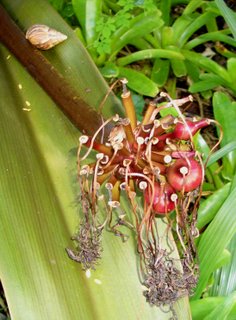
Fading Bagpipe

Surfboard Fins
Contact Julian Oteyza at (703) 969-5469 . Email: joteyza@verizon.net . www.guitaround.com


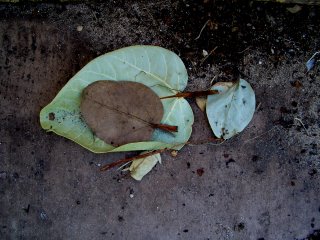



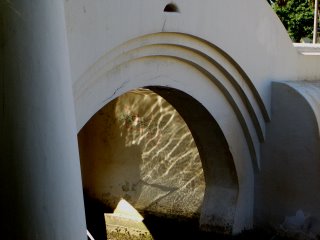


 Rebirth and Regeneration (flowers on the sidewalk)
Rebirth and Regeneration (flowers on the sidewalk)

